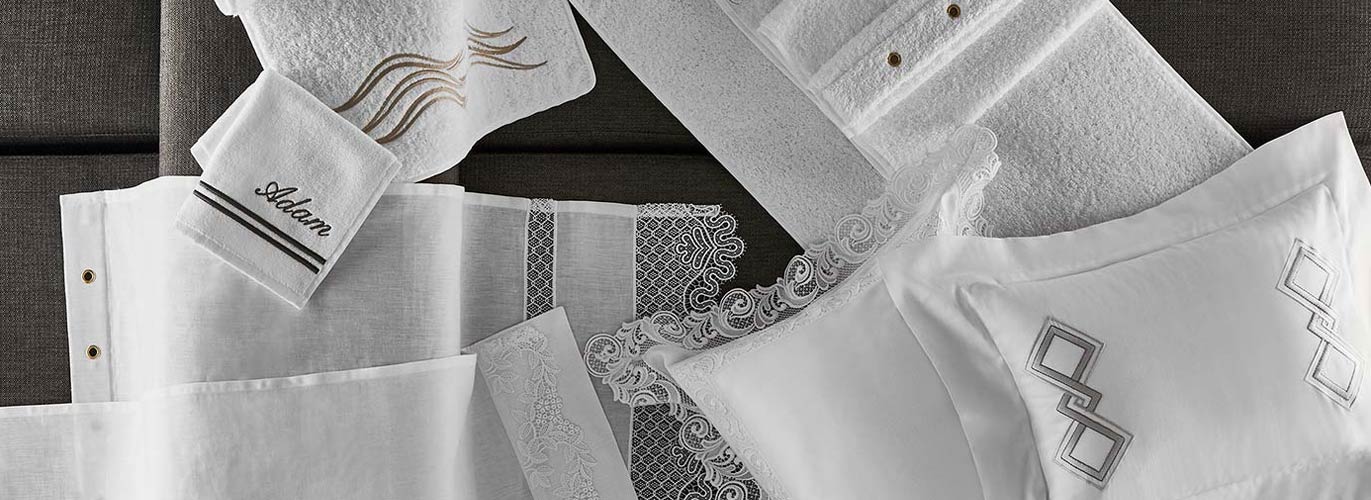CARE GUIDE

- Machine Washing
Due to the intimate usage of bed linens, it is recommended that household linens be washed before use. Sort your household linen by fibre (cotton, linen, silk, wool), colour (whites, light colours, dark colours), and type of item (sheets, towels, tablecloths). Do not include items made of synthetic fibres. Also, do not include garments with components that could damage fabrics (zippers, hooks, metal, parts). Make sure the items are unfolded when loading the machine. For bed linens, wash in cold water with mild, liquid biodegradable detergent. For bath items, machine wash on medium setting. Please view product-specific care instructions on the product label.
Delicate items with lace and embroidery should be enclosed in a large, thin mesh bag. Pillowcases and duvet covers should be washed inside out to protect the lace. When the wash cycle is completed, remove the laundry immediately and shake it to minimize wrinkles.
Avoiding using high heat or maximum temperatures.
- Detergent
Use a mild liquid biodegradable detergent without added bleach or whiteners. Avoid powdered detergent or detergents containing alkali and make sure the detergent is fully dissolved before the water touches the fabric. The amount of detergent depends on how soiled the laundry is and on the hardness of the water.
- Drying
When machine drying, never dry at high temperatures. If your dryer is adjustable, use the medium fan and spin speed. For bed linens, it is important to remove from dryer before completely dry, gently lay flat on ironing board then iron. For line drying, open each item and shake before hanging. Do not place coloured articles in direct sunlight - the sun makes whites seem shinier, but extended exposure may cause yellowing. Do not hang wool and delicate items vertically; lay flat on drying rack to prevent overstretching. Do not dry longer than necessary.
- Ironing
Use a steam iron on a warm/hot setting for cotton; use a hot setting for linen and a water spritzer if needed. For embroidered linens, iron them on the reverse side and while damp for best results. Avoid using spray starch and choose the proper temperature, as indicated by the symbols on the care label: medium/high for cotton and linen, low for silk and wool. To protect the softness and absorbency of towels, do not iron.
- Dry Cleaning
Delicate fibres, such as silk, wool and cashmere, are best professionally cleaned. To avoid excessive shrinkage on top-of-the-bed pieces, such as light quilts, bedspreads, and blankets, dry cleaning is recommended. Be sure to use professional dry cleaners who have experience with luxury linens and natural fibres.
- Storing
Store linens folded flat in a cool, dry, well-ventilated area. Linens stored long-term should avoid being stored in plastic bags and boxes as natural fibres need to breathe. Make sure stored linens are not exposed to direct sunlight which can cause permanent yellowing. For a crisp clean scent, store with a scented sachet.
